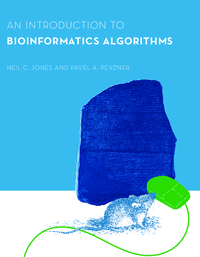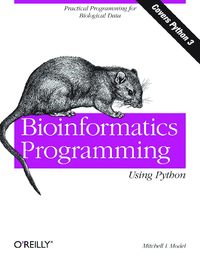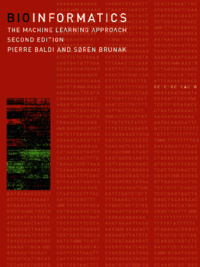Etiqueta "Bioinformatic"
Se han encontrado 4 Coincidencias
An Introduction to Bioinformatics Algorithms
38 Visitas | 88 Descargas | 2015-07-17 18:21:43 | alejandromorales
This is an introductory textbook on bioinformatics algorithms and the com- putational ideas that have driven them through the last twenty years. There are many important probabilistic and statistical techniques that we do not cover, nor do we cover many important research questions that bioinfor- maticians are currently trying to answer. We deliberately do not cover all areas of computational biology; for example, important topics like protein folding are not even discussed.

Bioinformatic programming with Python
Programación en el área de bioinformática utilizando Python como lenguaje de Programación
46 Visitas | 99 Descargas | 2015-07-17 18:16:31 | alejandromorales
The purpose of this book is to show the reader how to use the Python programming language to facilitate and automate the wide variety of data manipulation tasks encountered in life science research and development. It is designed to be accessible to readers with a range of interests and backgrounds, both scientific and technical. It emphasizes practical programming, using meaningful examples of useful code. In addition to meeting the needs of individual readers, it can also be used as a textbook for a one-semester upper-level undergraduate or graduate-level course. This book is designed to teach you bioinformatics software development. There is no computational biology here: no statistics, formulas, equations—not even explanations of the algorithms that underlie commonly used informatics software. The book’s examples are all based on the kind of data life science researchers work with and what they do with it. The book focuses on practical data management and manipulation tasks. The term “data” has a wide scope here, including not only the contents of databases but also the contents of text files, web pages, and other information sources. Examples focus on genomics, an area that, relative to others, is more mature and easier to introduce to people new to the scientific content of bioinformatics, as well as dealing with data that is more amenable to representation and manipulation in software. Also, and not incidentally, it is the part of bioinformatics with which the author is most familiar.

Bioinformatics: The machine Learning Approach
52 Visitas | 93 Descargas | 2015-07-17 18:27:24 | alejandromorales
The book is aimed at both students and more advanced researchers, with diverse backgrounds. We have tried to provide a succinct description of the main biological concepts and problems for the readers with a stronger background in mathematics, statistics, and computer science. Likewise, the book is tailored to the biologists and biochemists who will often know more about the biological problems than the text explains, but need some help to understand the new data-driven algorithms, in the context of biological data. It should in principle provide enough insights while remaining sufficiently simple for the reader to be able to implement the algorithms described, or adapt them to a particular problem. The book, however, does not cover the informatics needed for the management of large databases and sequencing projects, or the processing of raw fluorescence data. The technical prerequisites for the book are basic calculus, algebra, and discrete probability theory, at the level of an undergraduate course. Any prior knowledge of DNA, RNA, and proteins is of course helpful, but not required.

Bioinformatics Algorithms demonstrations in Excel
44 Visitas | 76 Descargas | 2015-07-17 18:31:14 | alejandromorales
This project presents demonstrations of selected computer science algorithms important in bioinformatics, implemented in the spreadsheet program Microsoft Excel. Spreadsheets provide an interesting platform for demonstration of algorithms, since various steps of the calculations can be exposed in a manner that is easily comprehensible to users with little programming experience. The algorithms demonstrated include two approaches to approximate string matching (dynamic programming and Shift-AND numeric approximate matching), Hierarchical Clustering (used in phylogenetic studies and microarray analysis of gene expression), a Naive Bayes Classifier for simulated microarray gene expression data, and a simple Neural Network. These demonstrations are designed to serve as instructional aids in bioinformatics courses
Contribuir
Usted puede contribuir con Libros UCLV, es importante para nosotros su aporte..
Contribuir